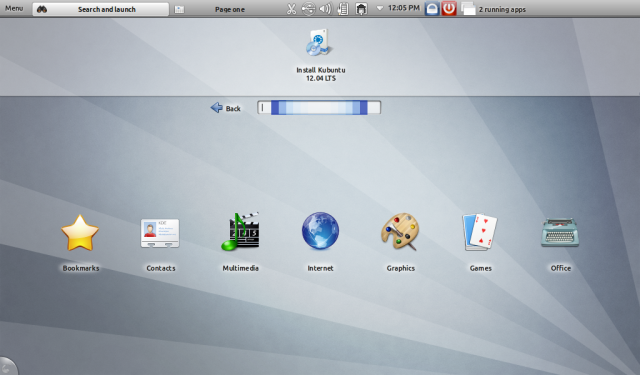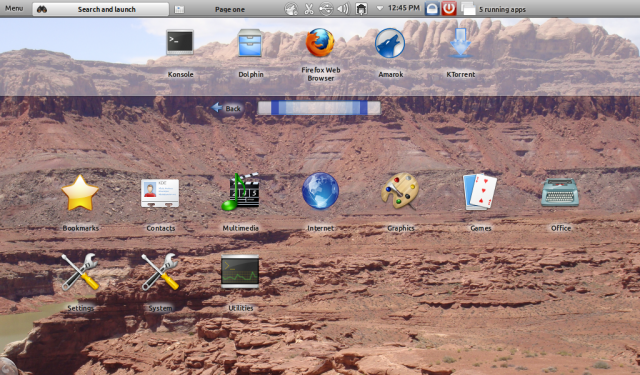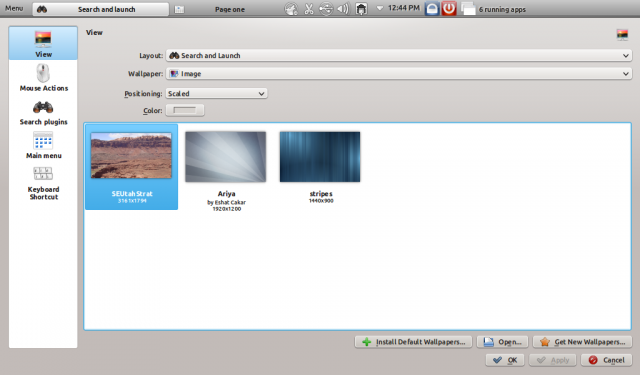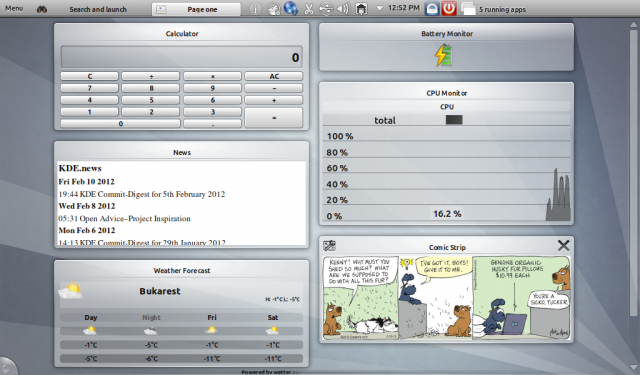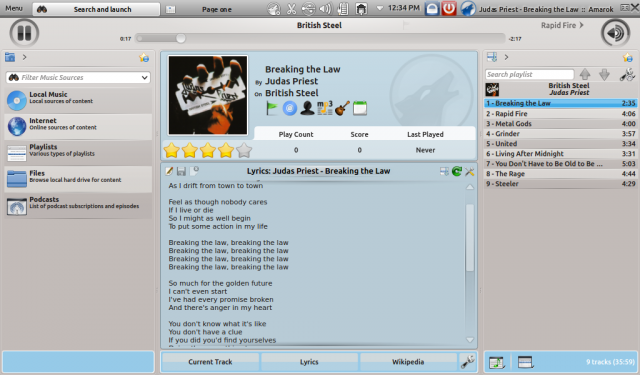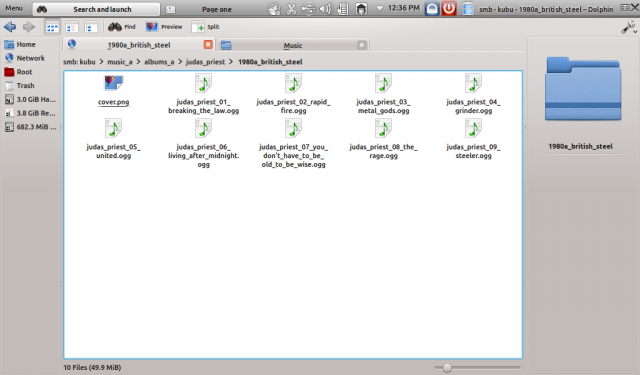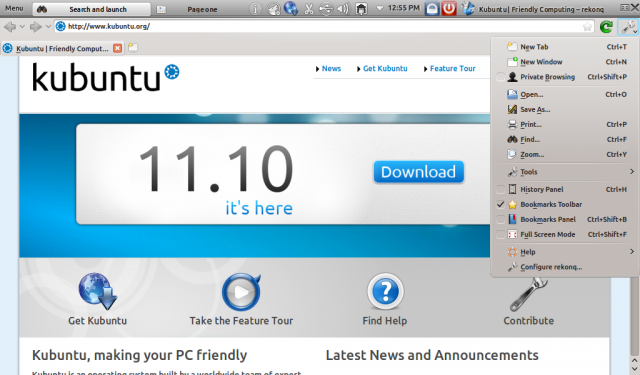With Unity getting most of the attention lately in Ubuntu and the feature-freeze coming in tomorrow, I decided to take the latest Kubuntu alpha for a spin and see how KDE 4.8 for netbooks looks and behaves. But first, a little about 12.04 as a whole.
Ubuntu 12.04 Precise Pangolin will be the next long-term supported release and as most of you already know, it is scheduled to arrive at the end of April 2012. Here is the release schedule of Ubuntu 12.04:
- Alpha 1 – December 1, 2011
- Alpha 2 – February 2, 2012
- Feature freeze – February 17, 2012
- Beta 1 – March 1, 2012
- Beta 2 – March 29, 2012
- Release candidate – April 19, 2012
- Final release – April 26, 2012
The 12.04.1 point release is scheduled for July.
This review is based on the latest Kubuntu alpha, after a clean install and performing a full upgrade using sudo apt-get update && sudo apt-get dist-upgrade.
I had a look at Plasma Netbook, by running the live ISO image on an Acer Aspire One D255E netbook from a USB flash drive. The netbook is equipped with an Intel N570 1.66 dual core CPU, 2GB RAM and Intel HD 3150 integrated graphics card.
Here are the main features available in Kubuntu 12.04:
- Kernel: Linux kernel 3.2.0
- Desktop environment:KDE Software Compilation 4.8.0
- File manager:Dolphin 2.0
- Web browser:Rekonq 0.8.71
- Music player:Amarok 2.5.0
- Terminal: Konsole 2.8
Kubuntu correctly detected the netbook and started off the USB drive directly in Plasma Netbook, it detected the graphics card and enabled desktop effects by default, also the Ethernet card, wireless and webcam worked out of the box.
The KDE interface for small screens is really nice in my opinion, and pretty much a lot more functional than Unity if you ask me.
By default, the desktop looks like this:
There is a strange artifact consisting of some blue vertical stripes in the search box, but other than that, the “Search and launch” page really looks pretty neat.
From left to right, the upper panel bar includes the menu of the currently selected application, the Search and launch page, another page titled “Page one” to which various Plasma widgets can be added (like a weather widget, or a web browser). In addition to these, we have the system tray with Klipper, volume icon (KMix), laptop battery icon, network icon, date and time. Options to lock screen and shutdown are also available.
On the top-right side there is an application selector, which, when clicked, shows a list of all the running applications.
To be honest, I could never familiarize with these interfaces designed for small screens, and Unity in Ubuntu seems to me strange and unusable even now. The idea of having to do additional clicks in order to select an application, or switch your hand from mouse to keyboard and viceversa doesn’t look fast, but I guess that’s just me. However, KDE really does a good job implementing the netbook interface. One of the things I still miss is the Alt+F2 run box which doesn’t seem to work in Plasma Netbook.
Here’s the Search and launch page with changed wallpaper and shortcuts to some applications:
Configuring search and launch:
And the widgets page:
Moving forward, here is the default music player which ships with Kubuntu, Amarok 2.5.0:
Amarok has reached a level of completeness, one of the only drawbacks being the fact that it’s pretty slow, and I’m talking about scrolling in a large default playlist (with album thumbnails enabled) and resizing its three main widgets (services, context and playlist). I guess this has to do something with Qt.
Dolphin, the file manager:
Rekonq the default WebKit-based web browser comes with support for HTML5:
To conclude, Kubuntu Plasma Netbook is pretty cool and intuitive, offering fast access to common applications, a pretty solid interface, and the best of them all, it is, as KDE always was, highly configurable. Hopefully the 12.04 release will be a good improvement over the last Kubuntu versions.
2 things:
The “alt-f2” is called “Kicker”. It simply is not auto-started on login for kde-netbook. So, you simply add it to the startup items. I believe they did this because you can do most of the functions from the search bar already present.
Amarok being slow is not due to Qt. I would suggest Clementine as an alternative if you don’t like Amarok. Clementine runs fast, as is based on qt, no kde libs.
i like how easy it is to go from full desktop to netbook mode…
i dont get how is KDE Plasma netbook differetn from KDE Plasma Active interface.
I saw the latter demoed for the upcoming Spark tablet and it is reallly, really nice for touchpad.
Are those two different interfaces competing or doing different things?
Will we be able to go from dekstop to netbook to touch interface…
would love to hear this clarified.
I love this interface!
It looks and behaves almost exactly what I could imagine.
Good work KDE team, and Dan for this review.
Desktop in picture nro 1 doesn’t look like that. You have to change first “Activities”. Many people have criticized the wallpaper, splash image with grey collar and i’ve to agree. But you can easily change it.
BTW – personally i like to change KDE Desktop as “netbook”-style just like you have in that picture. It’s nice to pick applications by that why. Some icons have been dropped also to low bar (i normally have there terminal, FF, Chromium, Thunderbird…)




